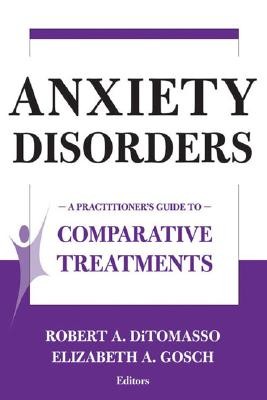| Anxiety Disorders: A Practitioner's Guide to Comparative Treatments Contributor(s): Ditomasso, Robert A. (Editor), Gosch, Elizabeth A. (Editor) |
|
 |
ISBN: 0826120911 ISBN-13: 9780826120915 Publisher: Springer Publishing Company OUR PRICE: $47.50 Product Type: Paperback - Other Formats Published: January 2007 Annotation: Anxiety disorders are costly, common, and debilitating. They often present challenging problems in the caseloads of practicing clinicians today. This volume compares and contrasts various models of, and treatment approaches to, anxiety disorders. Each contributor, a master clinician, analyzes the same case and presents a thorough description of the model. Detailed descriptions of therapists' skills and attributes, assessment plans, treatment goals, intervention strategies, common pitfalls, and mechanisms of change are included. Among the 11 therapies presented are Cognitive-Behavioral, Problem-Solving, Acceptance and Commitment, Contextual Family Therapy, Supportive-Expressive, Psychodynamic, and Psychopharmacological. The volume concludes with a useful table that succinctly summarizes the tenets of all these major approaches. |
| Additional Information |
| BISAC Categories: - Psychology | Psychopathology - Compulsive Behavior - Psychology | Neuropsychology - Psychology | Psychotherapy - General |
| Dewey: 616.852 |
| Series: Comparative Treatments for Psychological Disorders |
| Physical Information: 0.78" H x 6.04" W x 9.02" (1.15 lbs) 364 pages |
| Descriptions, Reviews, Etc. |
| Publisher Description: Anxiety disorders are costly, common, and debilitating. They often present challenging problems in the caseloads of practicing clinicians today. This volume compares and contrasts various models of, and treatment approaches to, anxiety disorders. Each contributor, a master clinician, analyzes the same case and presents a thorough description of the model. Detailed descriptions of therapists' skills and attributes, assessment plans, treatment goals, intervention strategies, common pitfalls, and mechanisms of change are included. Among the 11 therapies presented are Cognitive-Behavioral, Problem-Solving, Acceptance and Commitment, Contextual Family Therapy, Supportive-Expressive, Psychodynamic, and Psychopharmacological. The volume concludes with a useful table that succinctly summarizes the tenets of all these major approaches. |